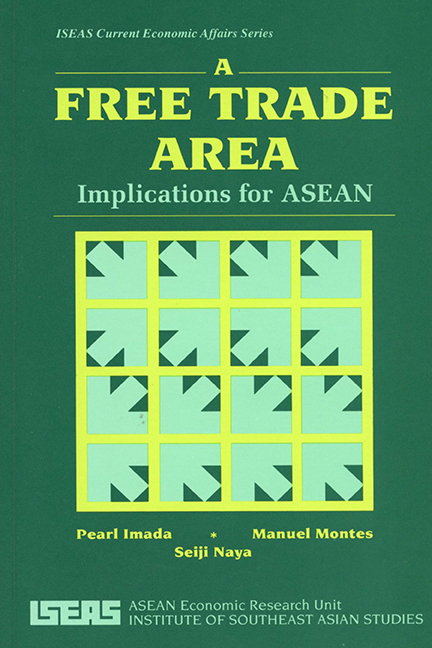Book contents
1 - Introduction
Published online by Cambridge University Press: 21 October 2015
Summary
The Association of Southeast Asian Nations (ASEAN) is often considered to be the most successful of all regional co-operation groupings among developing countries. The past two decades have shown that regional co-operation among developing countries is difficult; many of the groupings are now defunct or have been reorganized with fewer members. ASEAN, however, has established a strong spirit of co-operation and has made considerable progress in establishing a framework for consultation and co-operation. Yet, despite the fact that their co-operative efforts in trade and investment have continually improved since they were initiated in 1976, it is generally acknowledged that these efforts have had little impact on their growth or structure.
ASEAN's efforts at economic co-operation are often criticized on two basic, and somewhat contradictory, grounds. Some observers bemoan the slowness of progress and often blame the institutions or mechanisms used to promote integration as being flawed or ineffective. Another group of observers believe that economic integration is not feasible or desirable in ASEAN because of inherent structural problems. They argue that integration is likely to be trade-diverting and welfare-reducing. In responding to the first group, the problems of the present trade and industrial co-operation programmes are many and have been enumerated in a number of studies (Rieger 1985, Naya and Imada 1987). These problems include the large number of exceptions and the low preference margins in the present Preferential Trading Arrangements (PTA). Few would argue, however, that to a large degree these problems and the slow progress of the ASEAN PTA result from the fact that ASEAN leaders elected to maintain a marginal rate of integration. In other words, the slowness was essentially by design. The implementation and mechanical problems of ASEAN economic co-operation will not be discussed here. Instead, this study will focus on what ASEAN can expect to achieve with greater integration.
Presently, ASEAN stands ready to make a major step towards economic integration. ASEAN Ministers have indicated that it is time for a bold, innovative approach to economic co-operation.
- Type
- Chapter
- Information
- A Free Trade AreaImplications for ASEAN, pp. 1 - 2Publisher: ISEAS–Yusof Ishak InstitutePrint publication year: 1991

